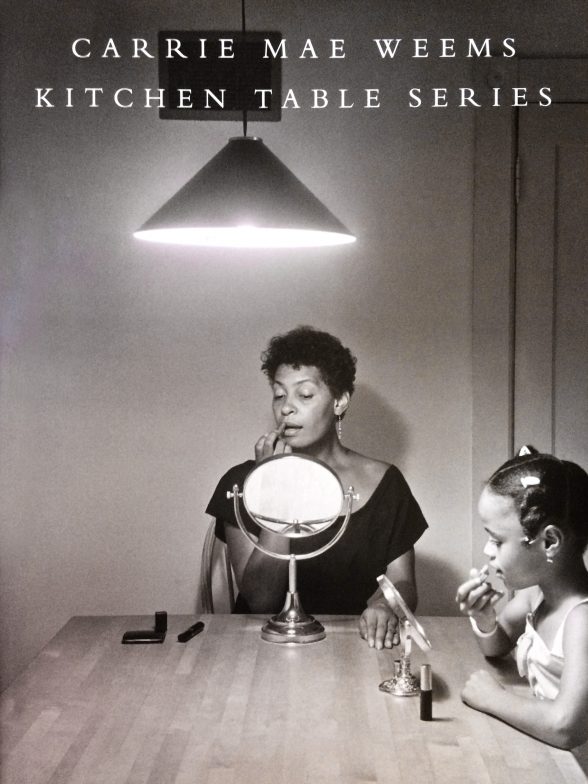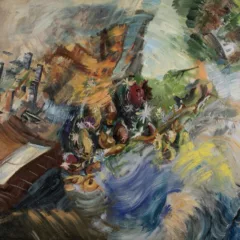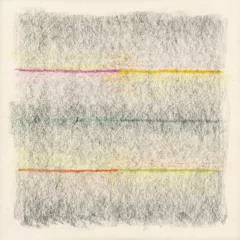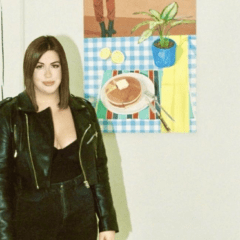Philippe Sers “Kandinsky; The elements of Art”
(Thames and Hudson, New York: 2015) ISBN 978-0-500-09397-9 –
$60 at Amazon
$85 at Thames and Hudson
This sumptuosly-illustrated volume is a serious and extremely clear account of Wassily Kandinsky’s artistic career which draws extensively from the artist’s correspondence and theoretical writings. Whether you are looking for a visual survey of the artist’s oeuvre or an understanding of the ideas behind his work, Sers’ book will reward you.
Kandinsky was not only the most influential of the pioneers of abstract painting, but was also a poet and noted teacher and theoretician of art. He was a practicing Christian who considered the goal of his art to be spiritual and prophetic – ideas one rarely encounters today. He knew and exhibited with many of the major artists of his day, including Constructivists, Expressionists, Cubists and Surrealists, yet he belonged to no group or tendency and the one colleague with whom he shared an artistic affinity was Paul Klee. The two lived in attached houses in the Bauhaus at Dessau and were able to visit each other via a connection in their basements.
The book’s full-color reproductions are so good that they enable study of the artist’s paintwork and layering of colors. Sers includes a section on Kandinsky’s theory of color and of forms, annotations about the subject matter embedded in his most important abstract works and a clear explanation of his frequent process of developing ideas over a series of paintings, which he termed sequentially “Impressions,”“Improvisations,” and “Compositions.” He discusses the relationship of theory to the artist’s practice and the possible contributions of facture to composition; an example is the importance of the artist’s reverse paintings on glass to his later process of working from details to background, which Sers analogizes as working from figuration to abstraction.
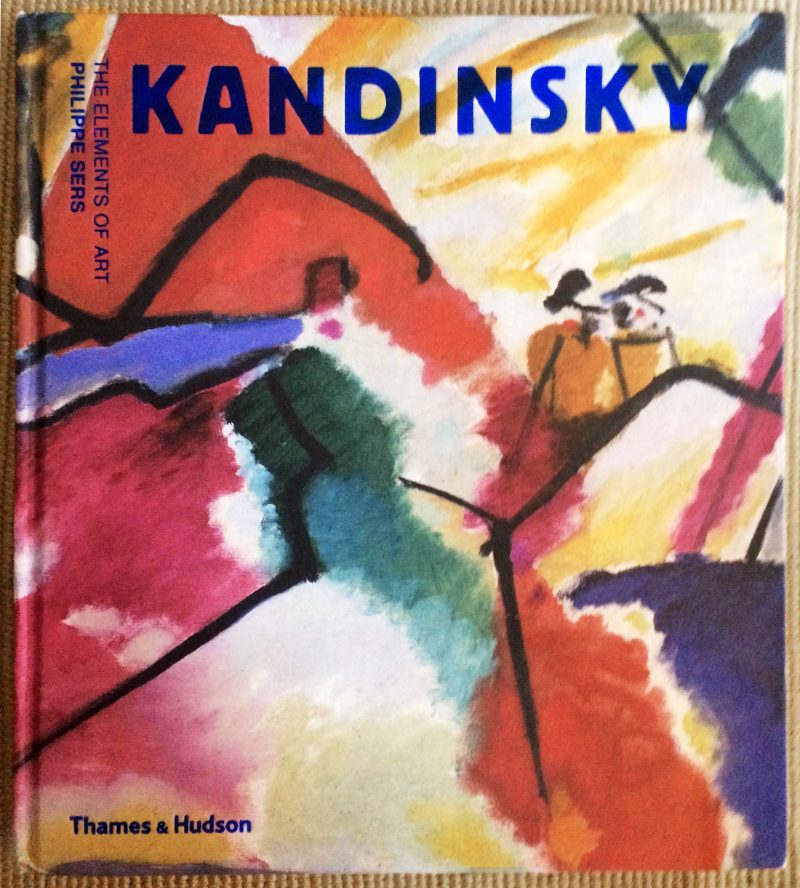
Jo Steffens and Matthias Neumann, eds. “Unpacking My Library; Artists and their books”
(Yale University Press, New Haven: 2017) ISBN 978-0-300-21698-1
$15.19 at Amazon
$20 at Yale University Press
This small and inviting book offers insight, pleasure and just plain fun – at least for those of us who like to look through other people’s bookshelves, and I’m certainly among them. Part of the interest is the idea that someone’s readings contribute to who they are. But I also look for titles I might not know, especially when I find them in the company of others I respect. Ten artists of diverse inclinations have opened their bookshelves to inspection: Janet Cardiff and George Bures Miller, Billy Childish, Mark Dion, Tracey Emin, Theaster Gates, Wangechi Mutu, Martin Parr, Ed Ruscha and Carrie Mae Weems. The editors record interviews with each of them and have asked each for their top ten.
The artists have varied approaches to organization and classification, how they deal with books they haven’t yet read, whether their bookshelves accommodate things other than books, and the criteria for choosing their favorites. The shelves in Mark Dion’s house intermingle books with an abundant collection of nature specimens and oddities related to those that often end up in his installations; Wangechi Mutu arranges her books by color because of her visual memory; Ed Ruscha is particularly interested in books as objects and has a fondness for the unconventional — such as the catalog from a sawmill with pages made of veneer slices of wood; Carrie Mae Weems also mentions the physical aspects of books that appeal to her: “beautifully printed books with cotton paper, with strong spines, good color, nice patterns —books that were made with thoughtful consideration, that aren’t too big, and can be held easily in the hand.”
This volume fits well in the hands, and the double-page spreads of the various artists’ bookshelves clearly dictated its elongated, horizontal proportions. The design, credited to Yve Ludwig, based on a design by Pentagram Design, is thoughtful, and enhances its contents with understated style.
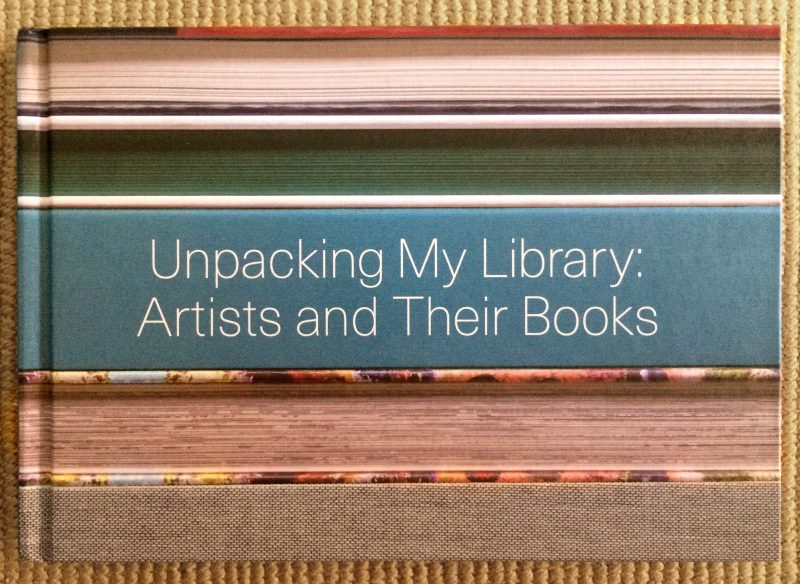
“Carrie Mae Weems; Kitchen Table Series”
(Damiani and Matsumoto Editions, Bologna, Italy: 2016) ISBN 978-88-6208-462-8
$33 at Amazon
Few artworks produced during the past three decades have achieved iconic status — but that adjective unquestionably fits the “Kitchen Table Series” (1990) of Carrie Mae Weems. This exquisitely produced monograph presents the series by itself for the first time. This will come as a revelation to the many who have seen only individual triptychs that comprise the series, but not the entirety; this is like reading one stanza of a narrative poem. The book will be welcomed by readers interested in contemporary art, American culture, feminism, African American studies, photography, and anyone else susceptible to the appeal of great art.
The “Kitchen Table Series” is a sequence of images and narrative text. Anchored by the eponymous setting – standing for the domestic space, and hence the private self — the woman at the center of the work juggles relationships with her lover, daughter and friends as she works to define herself. The beauty of Weems’ images rests on a geometrical formality similar to the paintings of Vermeer, while the text is both vernacular and supremely smooth – like the best blues songs. The series has been of interest to numerous younger artists and to a generation of African American women hungry for relevant images that do not ignore the complexity of their lives. The book includes an introduction by Sarah Lewis and an essay by Adrienne Edwards that locates the series within its own period and looks at its reception and influence over the past twenty-five years.
